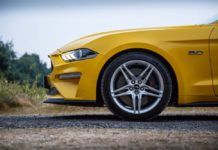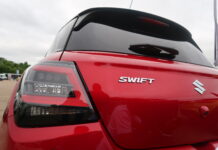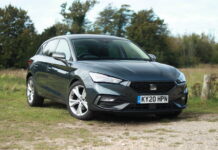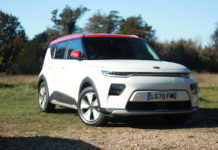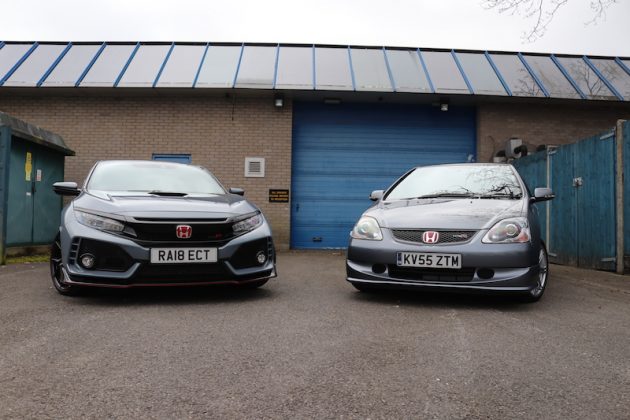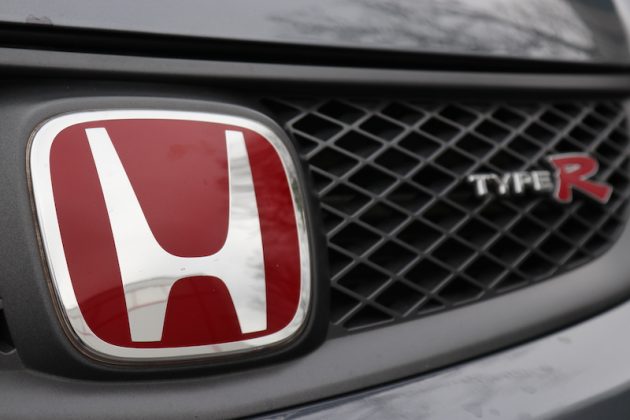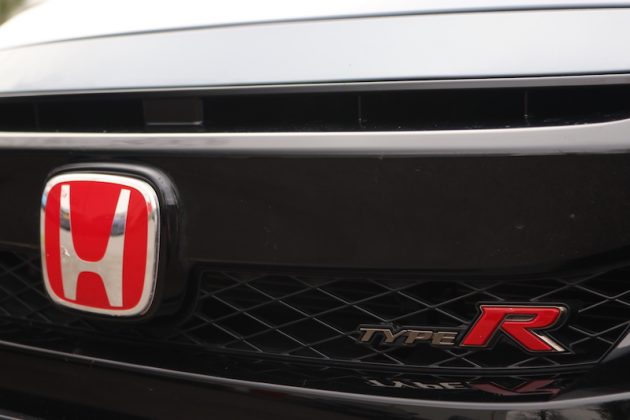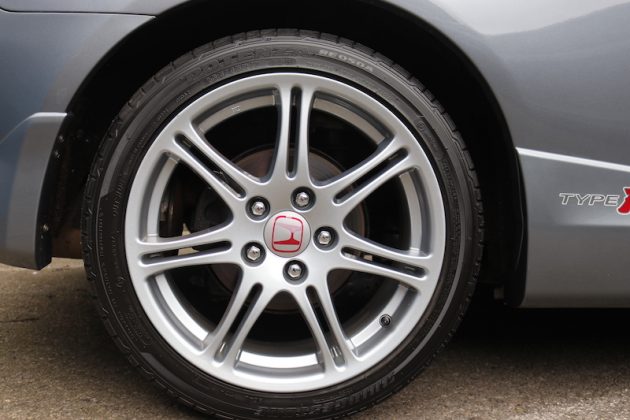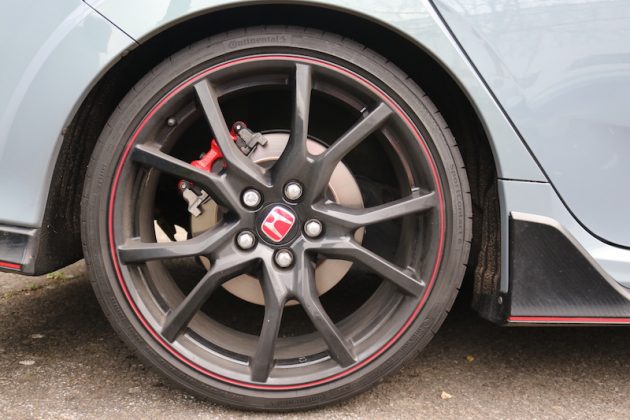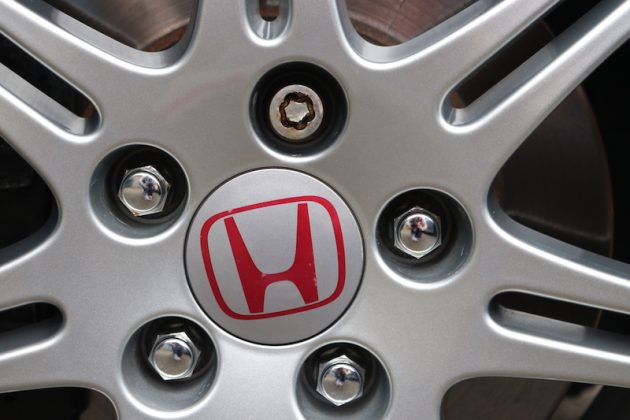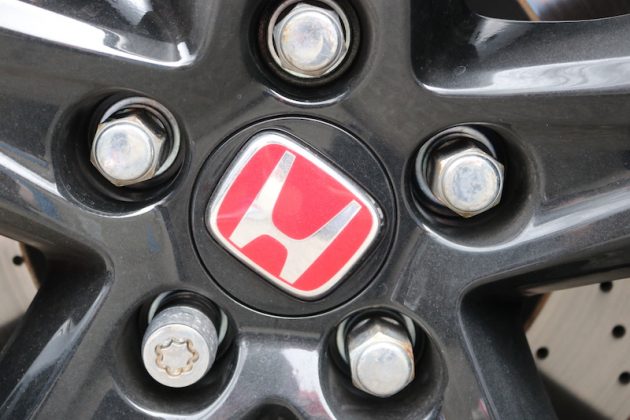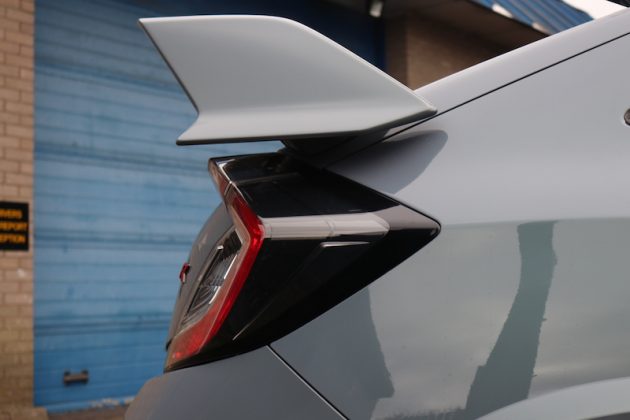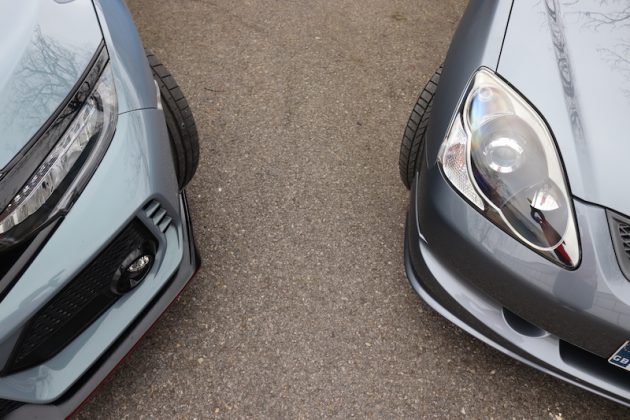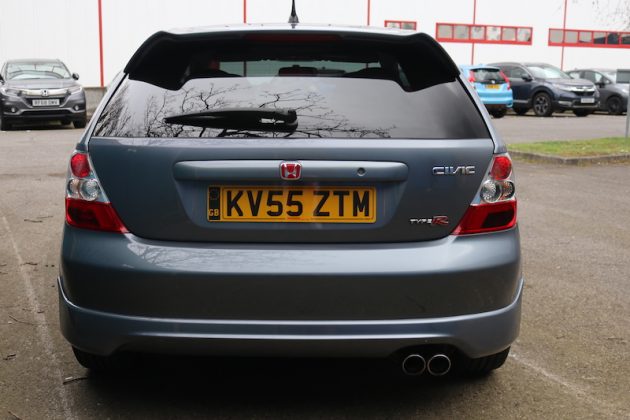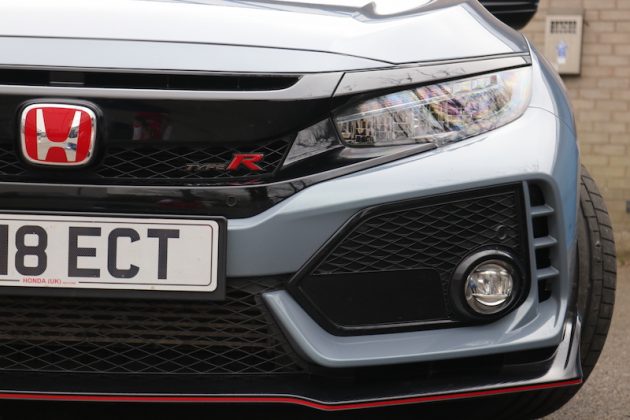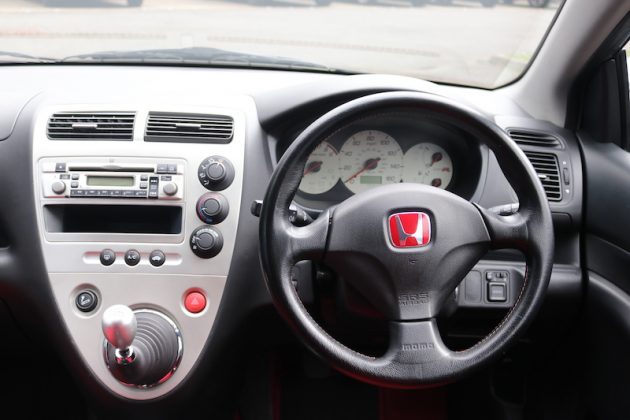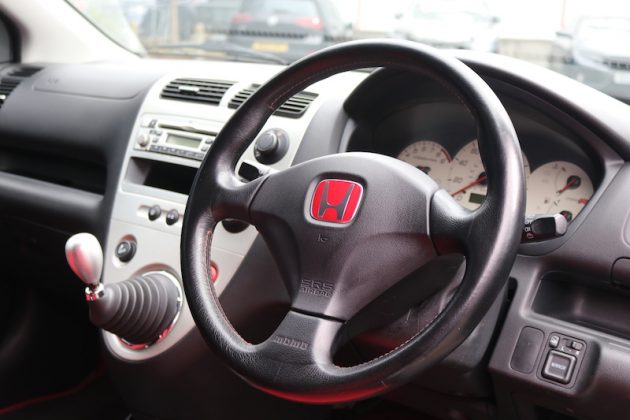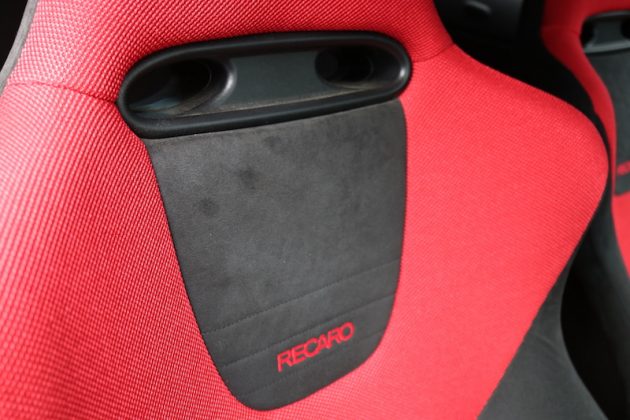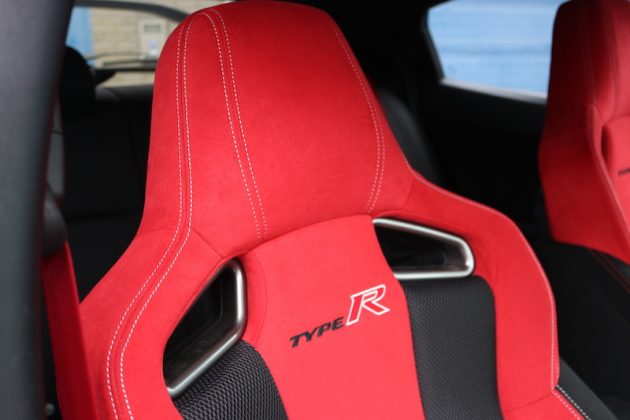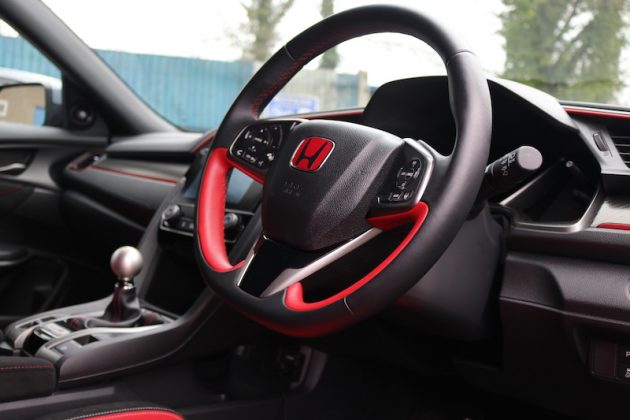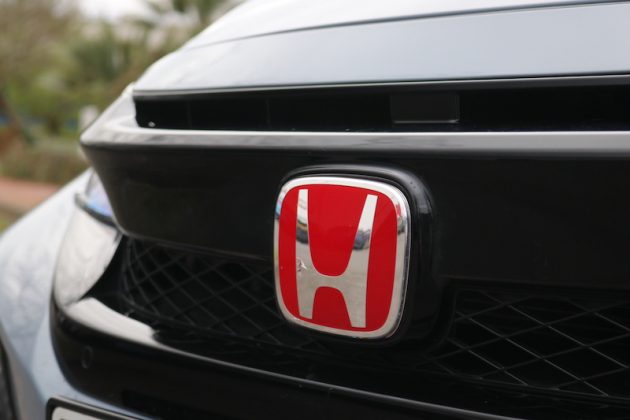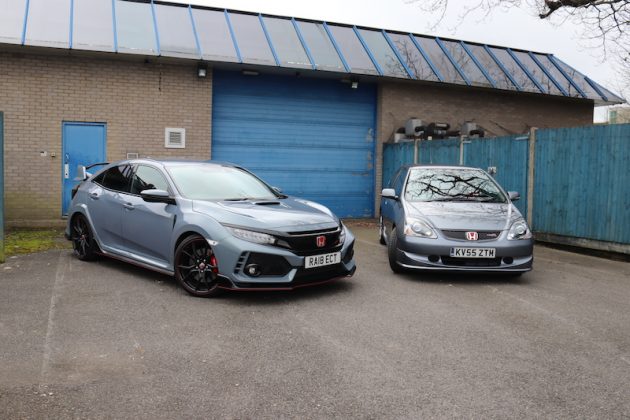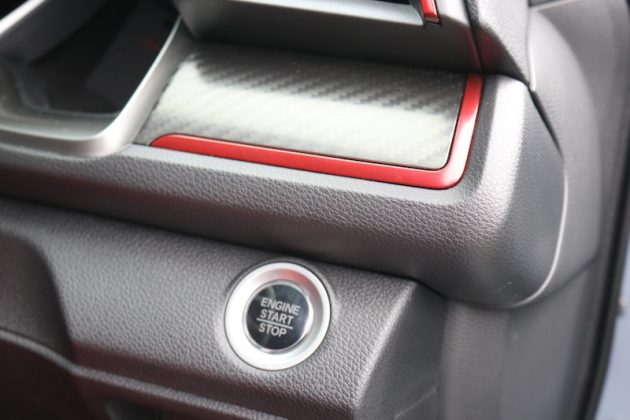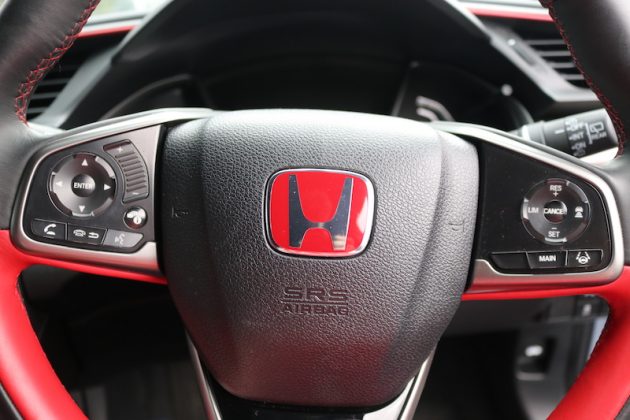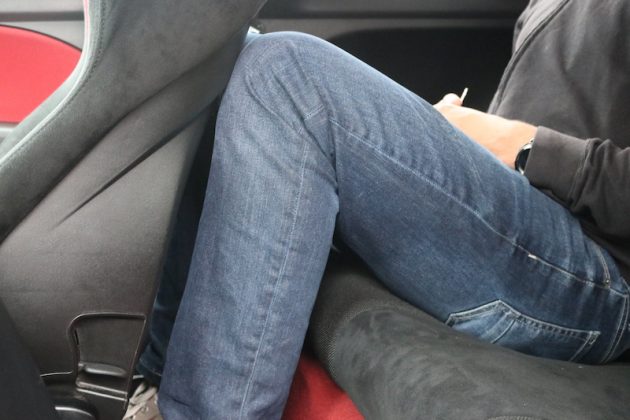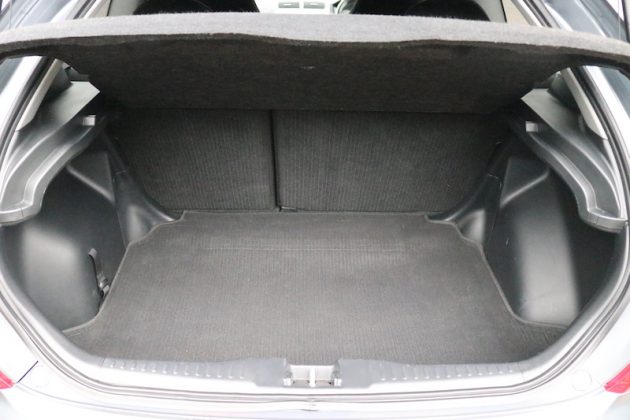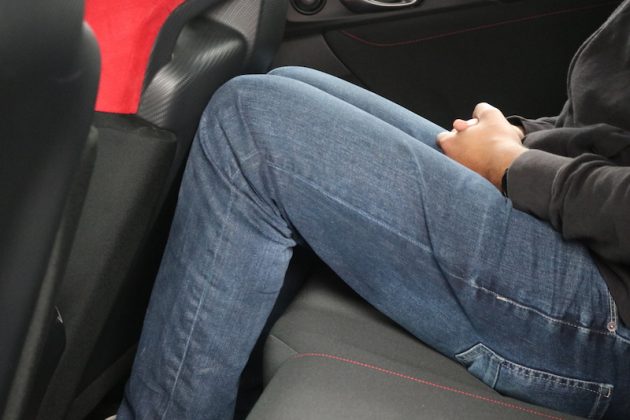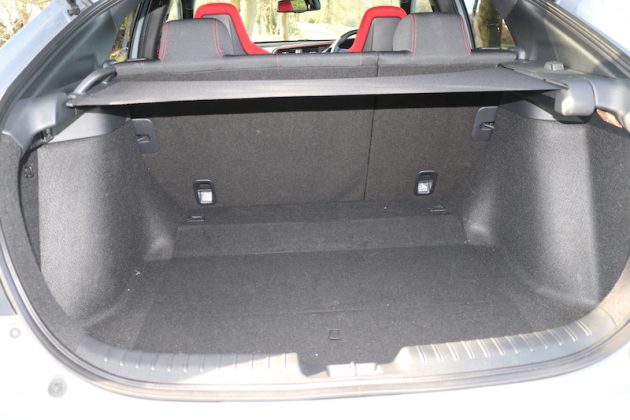The Honda Civic Type R has become a household name in the world of the hot hatch, mainly thanks to that legendary VTEC engine that delivered a Jekyll and Hyde driving experience. It was also a car that caused quite a stir as its rivals were turning to turbochargers whilst the ‘Breadvan’ from Japan proudly flew the flag for all things naturally aspirated. Well, I say it was from Japan, it was actually built here, in the UK, at Honda’s Swindon plant that is soon to be no more.

The EP3 may have been the first Civic Type R to grace the shores of the UK, but the first ever Type R was actually the EK9. Unlike the EP3 (and indeed the FK8), it was fitted the 1.6 litre naturally aspirated engine which produced an almost unthinkable 185ps. Anyway, the story of the EK9 is best saved for another day – the EP3 is the focus here. Yes, as I was saying, this was the first CTR the UK saw, whereas the FK8 is the latest model – so how do they compare?

Over egging the pudding?
Let’s start with the design of both cars. As much as I know styling is – and always will be – subjective, I think it goes without saying that the FK8 is the more extreme looking out of the two cars. I bet the EP3 looked quite racy back in 2001, but it looks like a shrinking violet parked next to the the many creases and angles that the FK8 possesses. If this were a prison fight, I’d be putting my money on the new boy.
However, I imagine many will prefer the somewhat subtle and assuming looks of the EP3, and I’d argue it’s gets the balance just right. It’s not too boring, but at the same time it’s not as busy as a Picasso painting. Mind you, the FK8’s body is like that for a reason – downforce. That rear spoiler and those funny little vortex generators aren’t to please the Max Power generation, no. They are there to give the car positive downforce, a trait that the FK8’s rivals – and indeed the EP3 – cannot match.
That aside, though, there is a good chance that the looks of the FK8 will be enough to make people walk away from a Honda dealership as it will be a bit too much. Some will see the design of the FK8 as over egging the pudding, which is a pity as there is a cracking car underneath that simply mad looking exterior.
VTEC betrayal?
Honda’s VTEC system is a famous one, so famous, that it even inspired its own catchphrase; “VTEC kicked in, yo!”. The wonder of VTEC is to be found in the profiles of the camshaft. Below 6,000 revs or so, the EP3 would operate on the first cam profile to give better fuel economy, and for the most part it’s pretty docile. However, once you go beyond the realms of 6,000rpm and chase down 8,000, the car turns in to a completely different animal.
This is because the second cam profile comes in, which uses a bigger lobe to lift the valves higher to deliver more air in to the engine, which means more fuel, which gives more performance. It’s simple when you think of it, but very effective. Think of it as giving a runner extra oxygen levels in a marathon.

The FK8 still uses the VTEC system, but in a different fashion. That’s because Honda did the unthinkable with this car – and the FK2 of course – by fitting it with a turbocharger. For many Honda fans, this would have felt like the ultimate sacrilege, but it’s necessary as it means more power can be had from the engine, and it’s also more efficient, so what’s not to like?
At this point, you may be wondering what role VTEC plays in the FK8, as it’s the turbo that takes care of the power. Well, it’s responsible for getting the exhaust gases out of the engine as quickly as possible to new air can be brought in for combustion and to give better performance. Brief science lesson over, let’s hit the road.

Blast from the past
Believe it or not, but my drive in the EP3 Civic Type R was a first for me, so I was keen to see what all the fuss is about. If you want to know my thoughts in greater detail, please check out the Throwback Review I published a few weeks ago. The outskirts of Bracknell – that’s where Honda UK is based – doesn’t have the most spectacular of roads, but I was still able to grab the EP3 by the scruff of the neck and give it a damn good thrashing.
This isn’t just any EP3, though, this is the much sought after Premier Edition. This adds a few extra goodies over the standard car including very pleasing Recaro seats, which hug you in the right places, but they are set a little too high for my liking. Apart from that small criticism, the driving position is bang on, and the location of the gear lever may be unusual, but it feels so right when you get used to it.

In regard to performance stats, when you work your ways through the gears as if there is no tomorrow, you’ll be able to crack 6.6 seconds (pre-facelift would do the same speed in 6.8 seconds) and the the top speed is 146mph, which is respectable even by today’s standards. The engine does of course need to be revved hard to get the desired effect, but contrary to what some people say, the EP3 does not feel gutless when you don’t happen to be in VTEC.
The engine and gearbox combination are the clear standout in this car, but let’s not forget the way how this car handles. It’s lighter than its contemporary rivals and the chassis is playful, meaning you can provoke a bit of lift-off oversteer when you’re in the mood. It’s reported to be a bit a handful in the wet, but thankfully I had dry conditions for my quick drive.

It’s not all perfect though; there’s no limited slip diff as standard, which is one of the reasons it’s a bit ‘challenging’ in the wet, but annoyingly, Japanese versions of the car did get one as standard, despite being made in the same place. They also got a more powerful engine and a few other goodies, but that’s by the by.
Another area of disappointment is the steering. Like most modern cars (well, modernish in the case of the EP3) the car has electric power steering, which offers a decent enough weight and is direct, but it’s disappointingly numb. It’s like Jack Daniel’s and Coke with far too much coke in it – it simply doesn’t hit the spot like it should do.

On the plus side, the ride is not as hard or as crashy as some people would lead me to believe and I found the car compliant, relatively speaking of course. The Recaro seats definitely help here, although I did find them a bit firm, but let’s face it, this is not a car built for comfort. However, the FK8 is, sort of.
Jack of all trades
Following the hard edged nature of the FK2 – deploying +R mode in that was basically asking to have your spine shaken to dust – Honda did the honourable thing by giving the FK8 a ‘Comfort’ driving mode. On top of this, Honda also sorted out the suspension – torsion beam was binned in place of an independent setup – meaning that you don’t need a perfectly smooth racetrack to use +R without your bones being shaken free from their sockets.
Don’t think that the FK8 has gone soft, though, as it still packs a very meaty punch. Let’s start with the engine; like the EP3, it has a displacement of 2.0 litres, but it’s turbocharged, meaning it will offer 320ps and 400Nm of torque – considerably more than its ancestor. This means 0-62 comes in 5.8 seconds, and the top speed is an almost unthinkable 169mph. As you would expect from a turbocharged unit, the power is usable more of the time, but there is a little bit of leg to contend, but it’s pretty minimal.

So, it has the EP3 licked for pure pace, and it also has it beat for driving position. The chunky sport seats in the FK8 are low slung, and there’s a noticeable drop to get in them. Slide yourself inside and it feels like you’re driving a proper sports car. I’m actually willing to say this is the best driving position I’m experienced in any hot hatch so far.

It’s a dead heat when it comes to the gearchange, though, as both cars are as good as each other, but I prefer the steering in the FK8. It’s even more direct than the EP3, it has a nicer weight, and more importantly, it gives you more feedback. Some have said the steering weight feels too heavy when the car’s in +R mode, but I personally really like it.

As well as the aforementioned +R and Comfort drive modes, you also have Sport, which is the car’s default drive mode when you start it up. This is a great halfway house between Comfort and +R, offering a good blend of performance without being too firm, although +R mode isn’t actually as bad as you may expect. Oh, one thing I forgot to mention about the +R mode, it offers a rev match function, although that can be turned off, if desired. In case you’re wondering, no, there’s no launch control.

Not only does the FK8 deliver its power in a different manner, but the way in which it tackles corners is different as well. The FK8 trades the EP3’s playfulness for sheer grip, the sort of grip you wouldn’t believe is possible from a front wheel drive car. The chassis and the sticky SportContact 5 tyres allow you attack corners at speeds that you would think are impossible.

Unlike the EP3, the FK8 comes standard with a limited sip diff, and my word, can you feel it pull you around the corners, although I wouldn’t say it’s overly aggressive. Don’t get me wrong, you can still get the FK8 to dance a bit, but you’ll need a bit of trail braking to induce such shenanigans. However, I’d say the EP3 just shades it for the fun factor in the corners, but the FK8 reigns supreme when it comes to grip, although the wider track and longer wheelbase gives it the advantage over the EP3.
What about the boring, practical stuff?
These are both hot hatches, so let’s forget about the horsepower and the lift-off oversteer for a few moments and touch upon the boring, practical stuff. The FK8 is the larger car, and it has five doors, so this is an area where it quickly gains an advantage. The EP3 is only available as a three door, so getting access to the rear is a bit of a faff, especially when you bear in mind that the seats don’t automatically slide forward when you fold the seat down.
The rear of the EP3 offers a little less legroom than its younger counterpart, but thanks to its somewhat boxy shape, you do get a bit more headroom. Both cars are only four seaters, though, which may irk some. When it comes to boot size, as you would expect, the FK8 wins this fight as it offers 420 compared to the EP3’s 315. The FK8 also has cubbyholes, although the EP3 offers more cupholders in the front.
In regard to running costs, The FK8 also wins this battle thanks to the aid of the turbocharger, which makes the car more efficient. On a combined run, Honda states it offers 36.7mpg (NEDC) whereas the EP3 offers 31.7 (NEDC). 176g/km of CO2 is emitted by the new boy, and the EP3 drops down to 212g/km.
Insurance groups is where the EP3 starts to claw things back, though, as it sits in group 34, whereas the FK8 is in a more lofty group of 40. Price is an area where the EP3 emphatically wins as you can pick up a used – albeit a ropey – example for as little as £2,000, whereas a new FK8 will cost you at least £31,525.
So, what’s the verdict?
So then, crunch time. Both cars have their merits, and thanks to its much lower asking price, the EP3 will be much more obtainable. However, the FK8 offers the better performance and you can use more of it more often. However, I’d argue that the EP3 may just take the fun factor in the corner, but the FK8 is a force to be reckoned with when it comes to taking corners quickly.

The EP3 looks better, though, and the power delivery is definitely intoxicating, although it may not be the best to live with day-to-day, but that depends on your daily commute of course. I arrived at Honda UK in the FK8 and that’s the car I would choose leave in as well, so that is my verdict. Let’s not take anything away from the EP3, though, because without it, we may have never got the FK8, plus it’s a great reminder of how rewarding naturally aspirated cars can be.


